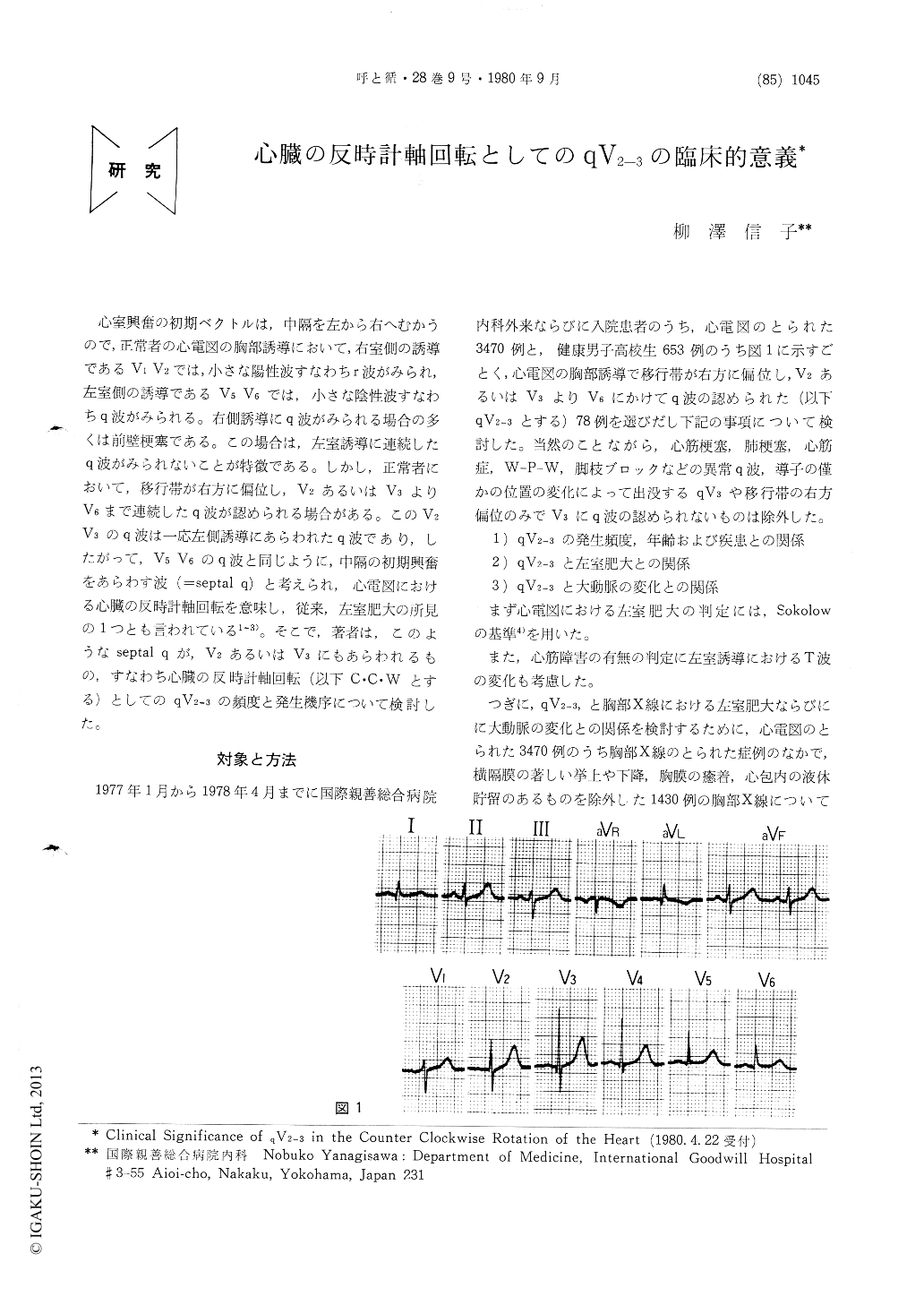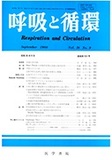Japanese
English
- 有料閲覧
- Abstract 文献概要
- 1ページ目 Look Inside
心室興奮の初期ベクトルは,中隔を左から右へむかうので,正常者の心電図の胸部誘導において,右室側の誘導であるV1V2では,小さな陽性波すなわちr波がみられ,左室側の誘導であるV5V6では,小さな陰性波すなわちq波がみられる。右側誘導にq波がみられる場合の多くは前壁梗塞である。この場合は,左室誘導に連続したq波がみられないことが特徴である。しかし,正常者において,移行帯が右方に偏位し,V2あるいはV3よりV6まで連続したq波が認められる場合がある。このV2V3のq波は一応左側誘導にあらわれたq波であり,したがって,V5V6のq波と同じように,中隔の初期興奮をあらわす波(=septal q)と考えられ,心電図における心臓の反時計軸回転を意味し,従来,左室肥大の所見の1つとも言われている1〜3)。そこで,著者は,このようなseptal qが,V2あるいはV3にもあらわれるもの,すなわち心臓の反時計軸回転(以下C・C・Wとする)としてのqV2—3の頻度と発生機序について検討した。
Electrocardiograms of 3,470 cases and chest radiographs of 1.430 cases were reviewed to determine the causes of counterclockwise rotation of QRS and of heart. Seventy-eight patients with the pattern of q in V2 or V3 to V6 and the transitional zone shifted to the right (counterclockwise rotation of QRS). It was found that they all had widening aorta, and the majorities had an absence of pulmonary artery trunk in the posteroanterior chest radiographs. The data seems to suggest that aortic lesion is an important cause in producing counterclockwise rotation of the heart and the QRS. Although most such patients were in older age groups, cardiac enlargement, hypertrophy, or damage were not found to contribute to the etiology of counterclockwise rotation of the QRS, but may even counteract the development of counter-clockwise rotation of either the heart or the QRS axis.

Copyright © 1980, Igaku-Shoin Ltd. All rights reserved.


